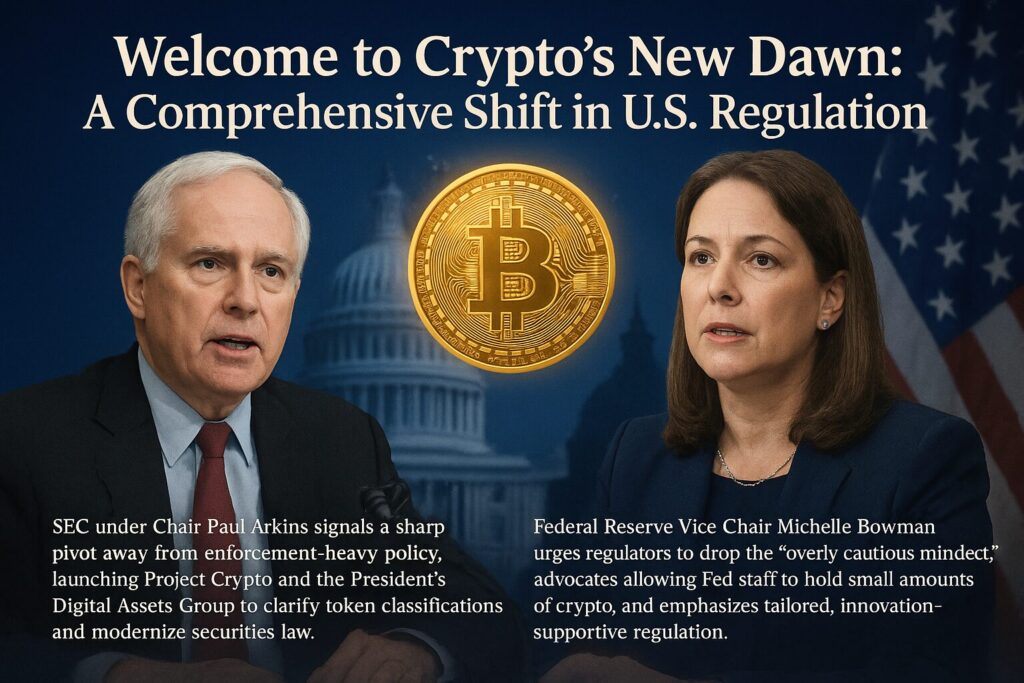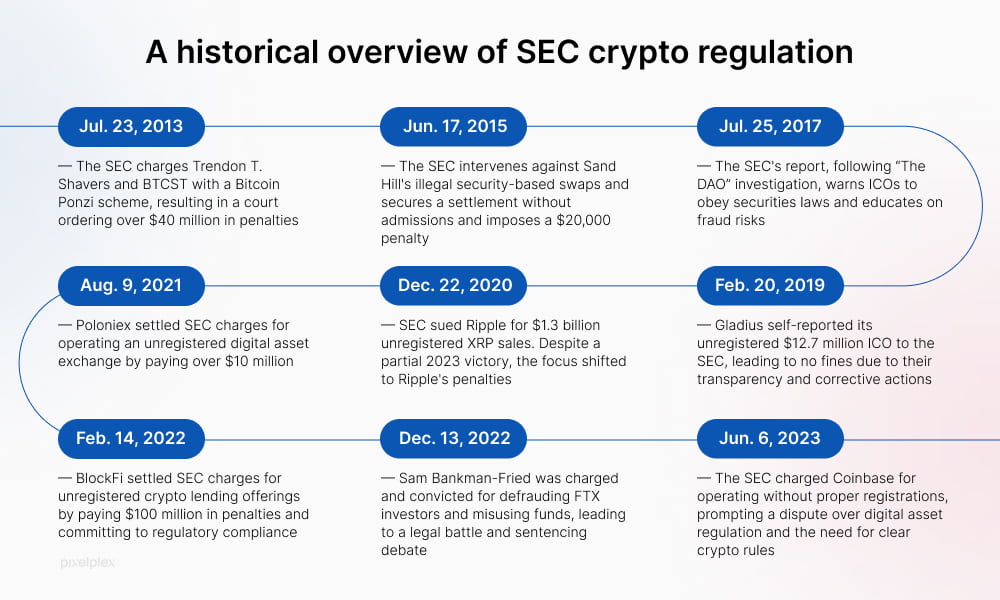
Main Points:
- SEC under Chair Paul Atkins signals a sharp pivot away from enforcement-heavy policy, launching Project Crypto and the President’s Digital Assets Group to clarify token classifications and modernize securities law.
- Federal Reserve Vice Chair Michelle Bowman urges regulators to drop the “overly cautious mindset,” advocates allowing Fed staff to hold small amounts of crypto, and emphasizes tailored, innovation-supportive regulation.
- These actions reflect a broader policy shift under the Trump administration aimed at making the U.S. a global leader in crypto, supported by the recently released 160-page White House digital assets roadmap and the new GENIUS Act for stablecoin regulation.
1. SEC’s Strategic Turn: Embracing Innovation — Not Enforcement
SEC Chair Paul Atkins has emphatically declared a “new day” for crypto regulation, pivoting away from his predecessor’s defensive posture. Speaking at the Wyoming Blockchain Symposium, he asserted that “very few tokens are securities,” noting that whether a token qualifies depends on how it’s packaged and marketed. This marks a stark reversal from the aggressive enforcement approach under Gary Gensler.
This shift isn’t just rhetoric. Atkins introduced Project Crypto, an initiative aimed at modernizing securities law, categorizing digital assets—like collectibles, commodities, and stablecoins—and facilitating the on-chain transition of U.S. financial markets. As part of this transition, he also announced the forthcoming launch of the President’s Digital Assets Group, which will implement recommendations from the White House’s Digital Asset Markets Working Group.

2. Fed’s Open Embrace: From Cautious to Constructively Curious
At the same symposium, Fed Vice Chair for Supervision Michelle Bowman urged her peers to abandon an “overly cautious mindset” toward emerging technologies like blockchain, AI, and digital assets. She emphasized that recognizing the promise of innovation is as important as managing risk.
Notably, Bowman proposed that Fed staff be permitted to hold “de minimis” amounts of crypto. Her metaphor compared this hands-on experience to learning to ski—in other words, understanding crypto doesn’t come from theory alone. She also pointed to the newly enacted GENIUS Act, which establishes a regulatory framework for stablecoins and signals the shifting policy environment.
3. A Broader Policy Landscape: White House Roadmap and Legislative Moves
The regulatory shift isn’t happening in isolation. On July 30, 2025, the White House released an influential 160-page report offering recommendations across securities, banking, taxation, illicit finance, and cybersecurity, with proposals to modernize trading infrastructure and streamline intermediary roles.
Congress is also weighing laws like the GENIUS Act for stablecoins and others like the CLARITY Bill, aimed at comprehensive regulatory clarity. These developments align with a broader push by the Trump administration, as the crypto industry anticipates an era of reduced enforcement, revived innovation and reinstated U.S. leadership in the space.
Summary – Why This Matters to Innovators, Investors, and Practitioners
These regulatory shifts mark a profound departure from prior U.S. crypto policy. With clearer rules, flexible classification frameworks, and constructive collaboration between regulators and industry, the outlook for new tokens, blockchain-based financial applications, and crypto-powered business models is brighter than ever.
Projects and firms that were previously deterred by enforcement risk may now find a more inviting regulatory environment. Meanwhile, the combination of Project Crypto, GENIUS Act, and the White House roadmap signals that tokenization, DeFi, and on-chain finance could become viable, regulated channels for value creation.
Summary
The U.S. appears poised to become a hub for crypto innovation. Under Chair Atkins and Vice Chair Bowman, the SEC and the Fed are shifting from defensive enforcement to proactive, innovation-forward regulation. With new laws, working groups, and policy tools aimed at clarity and inclusion, the crypto industry may finally see the regulatory stability it has long sought.

